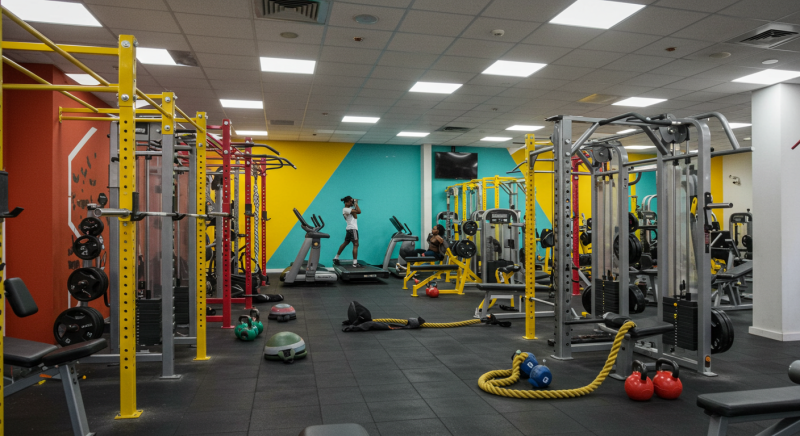Attracting Investors to Health and Wellness Business in Nigeria has never been more crucial as the sector experiences rapid expansion across gyms, spas, nutrition services and digital wellness platforms. Market forecasts indicate that gym‑training revenues will hit US$215.54 million by 2025, while health & wellness coaching is projected at US$64.27 million the same year, underscoring strong growth potential for investors seeking high‑yield opportunities in Nigeria’s wellness economy StatistaStatista.
In this article, we explore the current market dynamics, outline strategies for crafting compelling investment pitches, and provide actionable steps for entrepreneurs and corporate leaders to appeal to capital providers.
Key Takeaways: Attracting Investors to Health and Wellness Business in Nigeria demands a clear understanding of market size and growth trajectories; Attracting Investors to Health and Wellness Business in Nigeria thrives on robust financial projections and ROI clarity; Attracting Investors to Health and Wellness Business in Nigeria benefits from strategic partnerships and local‑global brand narratives; Attracting Investors to Health and Wellness Business in Nigeria can be accelerated by leveraging digital innovations and consumer data insights.

Understanding the Market Landscape: Attracting Investors to Health and Wellness Business in Nigeria
Nigeria’s health and wellness sector presents a fertile investment terrain, characterized by a population exceeding 227 million, rising disposable incomes, and a burgeoning middle class driving demand across fitness, spa, and nutrition services The Digital Fitness & Well‑Being market alone is projected to reach US$ 292.22 million by 2025 Statista, while the Beauty & Personal Care sector aims for US$ 10.17 billion in the same period . Regional spa services in the Middle East and Africa hit US$ 25.77 billion in 2023, underscoring opportunities for Nigerian players and Health & Wellness coaching is set to achieve US$ 64.27 million by 2025, highlighting the scalability of nutrition and lifestyle‑based offerings Statista.
Nigeria’s current health expenditure represents approximately 4.08 percent of GDP, reflecting both the public‑private investment gap and the potential for private sector growth—key signals that underpin Attracting Investors to Health and Wellness Business in Nigeria datadotStatista. Coupled with an expanding middle class estimated at over 40 million households, consumer spending on wellness products—from vitamins and supplements to fitness classes—is increasing rapidly
Gyms and fitness services form the backbone of this expansion. Revenue in Nigeria’s Exercise Equipment market is forecast to hit US$ 796.62 million by 2025, a 13.31 percent CAGR from 2025–2029, indicating robust capital demand for modern facilities and equipment Digital Fitness & Well‑Being platforms complement brick‑and‑mortar offerings, with projected revenue growth of 7.1 percent to US$ 292.22 million by 2025, demonstrating key opportunities for Attracting Investors to Health and Wellness Business in Nigeria through hybrid delivery models . Meanwhile, Digital Health services more broadly are set to generate US$ 645.36 million in 2025, underscoring growing telemedicine and app‑based wellness adoption
The spa and beauty segment is also ascending. Nigeria’s share within the Middle East and Africa Spa Service market—which reached US$ 25.77 billion in 2023 and is growing at a 13.47 percent CAGR through 2030—highlights the traction of destination and day‑spa concepts among affluent urbanites Stellar Market Research. The Nigeria Destination Spa Market is forecast to expand steadily from 2025 to 2031, creating openings for investors to back premium wellness retreats and integrated spa‑resort developments 6Wresearch.
Nutrition and lifestyle services round out the landscape. Health & Wellness coaching revenue is projected at US$ 64.27 million by 2025, reflecting strong consumer appetite for personalized guidance and preventive care Statista. The Vitamins & Minerals market in Nigeria is estimated at US$ 600.29 million in 2025, driven by increased supplement adoption among health‑conscious demographics. Additionally, the broader Middle East and Africa Clinical Nutrition segment reached US$ 0.89 billion in 2024, with a 5.13 percent CAGR to 2033, pointing to scalable export and cross‑border partnership potential Market Data Forecast.
Together, these macro‑ and micro‑level dynamics confirm that Attracting Investors to Health and Wellness Business in Nigeria hinges on tapping into a multibillion‑dollar ecosystem across fitness, spa, and nutrition services—underpinned by demographic growth, rising incomes, and digital innovation.
Crafting a Compelling Business Plan for Attracting Investors to Health and Wellness Business in Nigeria
A compelling business plan for Attracting Investors to Health and Wellness Business in Nigeria hinges on articulating a clear vision, demonstrating deep market understanding, and presenting robust financials to secure confidence and capital. Drawing from industry best practices, this plan should feature a concise executive summary, in‑depth market research, detailed operational and financial models, a credible management narrative, and clear risk mitigation strategies to resonate with investors. LinkedInNaijadirectory
Define Your Value Proposition and Vision
Begin with an Executive Summary that encapsulates your wellness concept—whether a boutique gym, luxury spa, or digital nutrition platform—and explains why it addresses a specific gap in Nigeria’s market LinkedIn. Emphasize your Unique Selling Proposition (USP), such as proprietary training methods, culturally tailored spa therapies, or AI‑driven meal plans, to differentiate your offering in a crowded landscape. By foregrounding this vision, you immediately signal to investors the strategic rationale behind Attracting Investors to Health and Wellness Business in Nigeria.
Conduct In‑Depth Market Research
Investors expect data‑backed insights. Incorporate recent figures on Nigeria’s fitness sector—projected to generate over US$ 800 million by 2025—and the rise of digital wellness platforms in Africa. Detail consumer demographics, purchasing behaviours, and competitive benchmarks, referencing sources like national statistics and industry reports to underline why Attracting Investors to Health and Wellness Business in Nigeria offers high‑potential returns.
Outline Operational and Financial Models
Map out your operational framework: facility layout, staffing ratios, supply‑chain logistics, and technology requirements for seamless service delivery Activator HQ. On the financial side, present multi‑year forecasts including capital expenditures, revenue streams (memberships, treatments, subscriptions), break‑even analysis, and clear ROI timelines that demonstrate profitability within 18–24 months. Such rigor in financial modeling is critical for Attracting Investors to Health and Wellness Business in Nigeria by showcasing predictable cash flows and scalability Home.
Highlight Management Team and Governance Structure
Investors “bet on jockeys, not horses.” Provide bios of your leadership, emphasizing industry experience, track records in health or hospitality, and relevant credentials joorney.com. Detail your governance structure—board composition, advisory panels, and reporting lines—to assure investors of transparent decision‑making and strategic oversight, a key factor in Attracting Investors to Health and Wellness Business in Nigeria.
Showcase Risk Mitigation and Social Impact
Address regulatory, operational, and market risks by outlining mitigation strategies such as phased rollouts, strategic partnerships with local health agencies, and quality‑control protocols Banyan Global. Highlight ESG and community‑impact initiatives—like nutrition education programmes or employee wellness schemes—to appeal to impact‑focused investors and reinforce the broader value proposition when Attracting Investors to Health and Wellness Business in Nigeria Techpoint Africa.
Strategic Partnerships: Amplifying Investor Confidence
Strategic partnerships, such as Verod’s investment in i‑Fitness, have become an important driver for Attracting Investors to Health and Wellness Business in Nigeria, signaling market validation and operational scalability Business Day. Moreover, successful exit deals like Cardinal Stone’s divestment from i‑Fitness demonstrate the financial upside and reinforce brand credibility for Attracting Investors to Health and Wellness Business in Nigeria Startup Lagos.
Forming alliances with established private equity firms like Verod underscores market confidence and demonstrates tangible investor interest when Attracting Investors to Health and Wellness Business in Nigeria pevcang.org. Collaborations with international agencies—for example, U.S.–Nigeria health partnerships—provide regulatory support and credibility boosts that enhance efforts at Attracting Investors to Health and Wellness Business in Nigeria U.S. Embassy Nigeria.

Brand Storytelling: Crafting Authentic Narratives
Employing digital storytelling techniques in health advertisements helps humanize services and builds trust essential for Attracting Investors to Health and Wellness Business in Nigeria ResearchGate. Leveraging Nigeria’s rich cultural heritage through brand narratives—as recommended in African marketing analyses—resonates emotionally with both local consumers and global capital providers, aiding Attracting Investors to Health and Wellness Business in Nigeria LinkedIn. Case studies of content marketing in Lagos wellness brands illustrate how relatable storytelling can boost brand credibility and support fundraising goals for Attracting Investors to Health and Wellness Business in Nigeria
Leveraging Influencers and Community Engagement
Partnering with micro‑ and macro‑influencers in the wellness space drives community engagement and signals market penetration to potential backers when Attracting Investors to Health and Wellness Business in Nigeria Shopify. Organizing local events and health fairs in collaboration with community groups provides credibility proof points and on‑ground visibility essential for Attracting Investors to Health and Wellness Business in Nigeria ResearchGate.
Public‑Private Partnerships and Regulatory Alliances
Engaging in public‑private partnerships under frameworks like Nigeria’s Health Sector Renewal Investment Programme showcases governmental endorsement, a key lever for Attracting Investors to Health and Wellness Business in Nigeria WHO | Regional Office for Africa. Forming strategic partnerships with regulatory compliance firms ensures adherence to CAMA 2020 guidelines and strengthens credibility among investors focused on governance, vital for Attracting Investors to Health and Wellness Business in Nigeria mondaq.com.
Leveraging Digital Marketing and Tech Innovations to Boost Attractiveness for Investors
Digital tools are reshaping Attracting Investors to Health and Wellness Business in Nigeria by enabling data‑driven growth. Highlight your plans for mobile apps, telemedicine services, and social‑commerce channels. Nigeria’s digital fitness segment, with in‑app purchases soaring, exemplifies how technology can unlock new revenue streams Statista. Showcase user‑acquisition strategies via targeted social media campaigns and SEO tactics, emphasizing measurable KPIs like customer acquisition cost (CAC) and lifetime value (LTV).
Showcasing Financial Projections and Return on Investment Metrics for Attracting Investors to Health and Wellness Business in Nigeria
Securing investor confidence in Nigeria’s health and wellness sector requires transparent financial projections and compelling return on investment (ROI) metrics. This approach is essential for Attracting Investors to Health and Wellness Business in Nigeria, as it demonstrates the sector’s profitability and growth potential.
Market Growth and Revenue Projections
The health and wellness industry in Nigeria is experiencing significant growth. For instance, the Health & Wellness coaching market is projected to reach US$64.27 million by 2025, indicating a robust demand for personalized wellness services. Similarly, the Health & Fitness market is expected to grow at a compound annual growth rate (CAGR) of 5.34% from 2022 to 2029, reaching a projected market volume of US$2.98 million by 2029 . These projections underscore the sector’s viability and are pivotal in Attracting Investors to Health and Wellness Business in Nigeria.
ROI Metrics and Financial Viability
Investors are keen on understanding the financial returns of their investments. Studies have shown that wellness programs can yield substantial ROI. For example, organizations with well-established wellness programs have experienced lower medical costs and fewer health-related claims, with some reporting a return of $3.27 for every dollar spent on wellness programs . Such metrics are instrumental in Attracting Investors to Health and Wellness Business in Nigeria, as they highlight the sector’s potential for profitability.
Operational Efficiency and Cost Management
Operational efficiency is another critical factor for investors. Businesses that demonstrate effective cost management and operational efficiency are more likely to attract investment. For example, pharmaceutical firms in Nigeria that invested in staff training and healthcare services observed a positive influence on their ROI, indicating that strategic investments in human capital can enhance profitability . Highlighting such efficiencies is crucial in Attracting Investors to Health and Wellness Business in Nigeria.
Strategic Planning and Risk Mitigation
A comprehensive business plan that includes strategic planning and risk mitigation strategies is vital. Investors need assurance that potential risks have been identified and addressed. This includes understanding market dynamics, regulatory environments, and competitive landscapes. By presenting a well-thought-out plan, businesses can effectively demonstrate their preparedness and resilience, further Attracting Investors to Health and Wellness Business in Nigeria.
Conclusion: Attracting Investors to Health and Wellness Business in Nigeria
Nigeria’s health and wellness industry offers vibrant opportunities for strategic investors. By understanding market dynamics, crafting data‑backed business plans, building credible partnerships, leveraging digital innovation, and presenting strong financial projections, entrepreneurs can significantly enhance their success in Attracting Investors to Health and Wellness Business in Nigeria.

Frequently Asked Questions (FAQ)
Q1: Why is showcasing financial projections essential when attracting investors to health and wellness businesses in Nigeria?
A1: Presenting detailed financial projections demonstrates the potential profitability and sustainability of your business. It provides investors with a clear picture of expected revenues, expenses, and growth trajectories, which is crucial for informed decision-making.
Q2: What key ROI metrics should be highlighted to appeal to investors?
A2: Important ROI metrics include net profit margins, customer acquisition costs, lifetime customer value, and payback periods. Highlighting these metrics shows investors the efficiency and potential returns of their investment.
Q3: How can I ensure my financial projections are realistic and credible?
A3: Base your projections on thorough market research, historical data, and industry benchmarks. Consulting with financial experts and using conservative estimates can also enhance credibility.
Q4: What common financial pitfalls should I avoid when presenting to investors?
A4: Avoid overestimating revenues, underestimating expenses, and neglecting to account for market fluctuations. Transparent and realistic projections build trust with potential investors.
Q5: How detailed should my financial projections be?
A5: Provide at least three to five years of projections, including income statements, cash flow statements, and balance sheets. Detailed assumptions behind each projection should also be included to provide context.
Q6: Should I include different financial scenarios in my projections?
A6: Yes, presenting best-case, worst-case, and most likely scenarios can demonstrate preparedness for various market conditions and enhance investor confidence.
Q7: How do I align my financial projections with my business plan?
A7: Ensure that your financial projections reflect the strategies and goals outlined in your business plan. Consistency between the two documents reinforces the feasibility of your business model.
Q8: What role does market analysis play in financial projections?
A8: Market analysis provides the data needed to make informed assumptions about customer demand, pricing strategies, and competitive positioning, all of which are integral to accurate financial forecasting.
Q9: How can I effectively communicate my financial projections to investors?
A9: Use clear visuals like charts and graphs, provide concise summaries, and be prepared to explain the rationale behind your numbers. Tailoring your presentation to your audience’s level of financial expertise can also be beneficial.
Q10: What tools or software can assist in creating financial projections?
A10: Tools like Microsoft Excel, QuickBooks, and specialized financial modeling software can help in creating detailed and accurate financial projections. Utilizing these tools can streamline the process and enhance the professionalism of your presentation.
READ MORE
Discover the Shocking Facts About Scholarships Today
